
Starting in 1948, American cars entered a new developmental phase marked by the sprouting of curious and rather excessive body extensions at their rear ends, often adorned by fins, rockets, jet engine exhausts, wings and other ornamentation. This era reached its peak in the late fifties and through the mid seventies. These remarkable protuberances then retreated and have long since been superseded by more practical and aerodynamic short and high rear ends. If—like me—you’ve ever wondered which car had the longest rear overhang, both in absolute as well as in relative terms, we’re finally going to answer that question. How can such important questions have been left unanswered until now?
In addition to our two winners and numerous runners-up, we’re also going to look at the history of how this trend unfolded.
Let’s start with the history, which like a few other fads and firsts, was started by Cadillac. Short trunk appendages started appearing in the mid-thirties, like on this 1933 Cadillac Town Sedan, but they mostly looked like afterthoughts, giving meaning to the word “trunk”.
The 1938 Cadillac Sixty Special, attributed to a young Bill Mitchell, was the first to make a longer trunk an integral part of the overall proportions and design. It essentially was the first mainstream “three-box” car in the US, and it was very influential indeed. It doesn’t take much squinting to see a Rolls Royce or Bentley from the fifties or early sixties.
The definitive trend to ever longer tails and to having it be an object conferring ever greater greater prestige commensurate with its length was also pioneered by Cadillac in 1948, when the higher priced 60 Special (bottom) got a tail stretch as compared to the Series 61/62 (top). This was accomplished by both moving the rear axle rearwards some seven inches as well as with longer fenders and trunk. The two numbers you see here are their rear overhang as measured from the center of the rear axle in absolute terms (inches) and in relative terms, as the percentage of total length.
In the case of this 60 Special and other cars with rearward-extended rear axles, those numbers don’t fully reflect the full impact of the additional rear body length and mass in relation to the passenger compartment. The 60 Special was 11″ longer overall, but the additional overhang only represents 4.3″ of that. But that’s what “overhang” means, and it’s the only way to make reasonably apples-to-apples comparisons. But don’t let that stop you from savoring the full visual impacts of extended rear decks.
Cadillac really stepped up its game in 1954, when a new longer tail was now to be seen not just on the 60 Special, but also on the Series 62 Coupe and Convertible, but without the extended rear wheelbase. This pushed the coupe and convertible solidly into new territory, in terms of overhang length and percentage. These numbers would soon be topped, but ultimately only by less than three inches. This is where seriously big butts—albeit a quite attractive one in this case—got their start.
The Series 62 sedan still had a more modest appendage.
This continued through 1958, with Cadillac offering a shorter Series 62 sedan (top) as well as an extended deck version of the 62 (middle), whose longer tail was standard on the DeVilles. And then there was the 60 Special (bottom), which had the longer tail but with the rear axle moved rearwards and a swath of chrome to enhance the look of length. Take your pick: long, longer, or what fools the eye to be even longer.
This ended in 1959 when a short tail just wasn’t going to work with the flamboyant fins that year. That made some loyal Cadillac drivers with older garages or ones that resented the challenges of parking them unhappy. The result was a temporary reversion, in the form of the short-deck Series 62/Park Avenue available in 1961-1963 (top). By 1964, it was history, and Cadillac continued the march towards ever-longer cars and rear overhangs.
Enough with the preliminaries.
The Top Ten Longest Overhangs, In Inches:
#1: 1974-1975 Imperial, 1976-1978 Chrysler New Yorker. Someone had to win, and this one is quite worthy.
#2: 1974-1976 Buick Electra 225. Buick was fond of long tails.
#3: 1963-1964 Buick Electra 225
#4 1969-1973 Imperial. Given that the ’73 Imperial (with the added little rubber bumpers in front) was the longest regular production car in the US at 235.3″, one might assume that it also had the longest rear end. It may well, but because the rear axle was extended rearwards compared the Chrysler, that somewhat reduced its percentage and the resulting absolute number.
#5: 1960 Ford. It was also the widest car of its time.
#6: 1974-1979 Lincoln Town Car. It had to be in the top ten.
#7: 1974-1976 Cadillac DeVille. Not at the top of the heap anymore.
#8: Tie between the 1960 Pontiac Bonneville (and 1959) and the 1958 Buick Limited. Again, if it weren’t for its set-back rear axle, the Bonneville would have scored higher. With its horizontal lines and trim, it certainly looks like it could be the longest.
#9: 1959-1960 Cadillac Series 61/62/DeVille. Yes, these ’59 and ’60 GM cars all look very tail happy.
#10: 1965-1968 Chrysler and 1969-1973 Chrysler. Coincidence? Maybe; of course my measurement tools, using a fine scale ruler on the best profile shots with the lowest lens distortion I could find and viewed on a large monitor isn’t going to be quite perfect. Undoubtedly there are accurate measurements on AMA spec sheets, but not readily accessible. These long tails work a lot better for me as wagons, and a lot more practical, obviously.
The Top Ten Longest Overhangs, In Percentage
Of Total Overall Length
#1: 1960 Ford. Ford made the ’60 too wide and long. The star of rear overhangs, in percentage of body length.
#2: 1959 Chevrolet. Ford was obviously reacting to the ’59 Chevy. Its relatively short wheelbase makes that tail longer as a percentage of total length.
#3: 1968-1979 Plymouth Belvedere/Satellite and Dodge Coronet station wagons. Seems a bit unlikely, but I’ll explain why a bit further down with the ’65 version.
#4: 1960 (and 1959) Pontiac Catalina. Due to the Bonneville’s setback rear axle, the Catalina has the longer overhang in percentages if not in inches.
#5: 1966-1967 Dodge Coronet and Plymouth Belvedere station wagons. I’ll explain with the ’65 below.
#6: A six-way tie between the 1959-1960 Bonneville, 1963-1964 Bonneville, 1963-1964 Electra 225, 1967-1968 Catalina, 1961 Ford, and 1970-1973 Coronet/Satellite wagons.
#7. A tie between the 1957 Thunderbird and the 1958 Mercury. I did not count continental spares, optional or standard (1956 Thunderbird).
#8: 1965 Plymouth Belvedere and Dodge Coronet. All these Belvedere and Coronets wagon bodies were based on the downsized 1962 Plymouth and Dodge wagons which had a 10″ rear extension over the rather short-tailed sedans in order to have enough room for a third seat. The ’62’s were a bit longer in front, so the percentages are not as high as these later version.
#9: 1966-1967 Buick Skylark: Buick was trying very hard to make these look like big cars, and succeeding.
#10: Another tie, between the ’62 Bonneville, the 1959-1960 Olds 88, the 1967-1968 Chevrolet and the 1969-1973 Chryslers.
Honorable Mention:
1968 Holden Brougham. This was a botched butt-enhancement job on the Holden Premier, and its percentage of overhang would have tied it for #3 in this contest, which was limited to US mass-production cars.
Note: This was a best-shot effort given the lack of manufacturer’s specifications, so I do not guarantee the accuracy herein. But the point has hopefully been made. Also, a number of these photos are mirror images, in order to have them all face the same direction. Fortunately (or not) that does not make their tails any shorter.
Related CC reading:
Design Analysis: Did The Lincoln Mark VI Have The Biggest Overhang Ratio Ever?
Who’s The Longest Mega-Coupe In The Land?
1961–1963 Cadillac Town Sedan And Park Avenue Sedan De Ville – Cadillac’s Bob-Tailed Nags
Curbside Classic: 1975 Imperial LeBaron Coupe – The Last One Worthy Of Its Name
































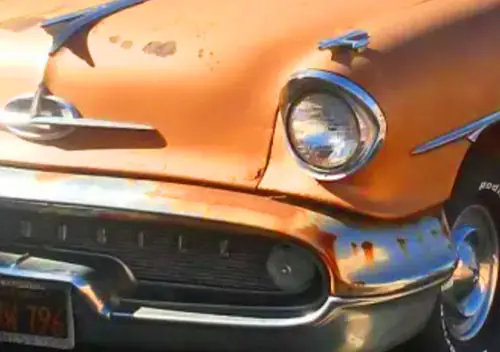
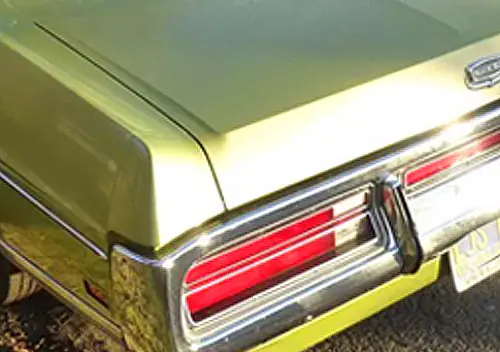


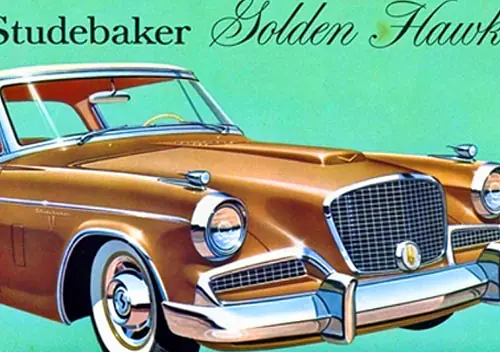


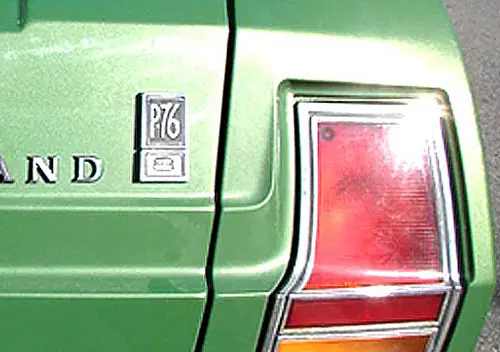
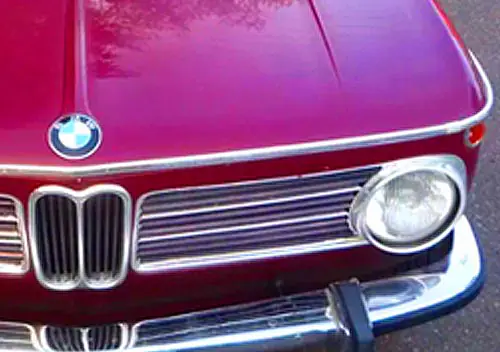
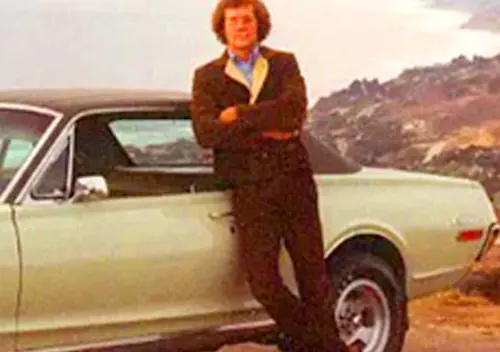


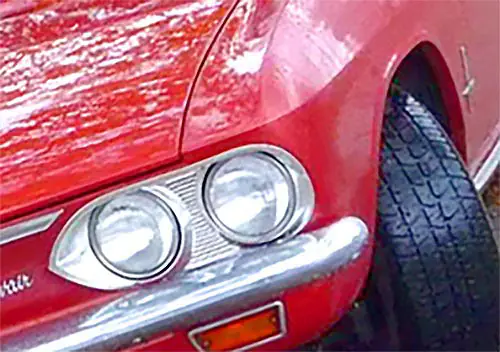






Now add a continental kit to those ’59-’60 Pontiacs and Chevies. The rear of the car became the focal point in the fifties and many ads only showed the rear. I’m thinking of a late 50’s Chrysler Corp. ad which showed all the lines and rear only.
What a GRAND post of truly GRAND automobiles! My motto…It’s HUGE! It guzzles gas! It pollutes the air! It scares the birds! Other cars part like the Red Sea to get out of the way! What’s NOT to love? The smallest car I have ever owned was a 77 Monte Carlo which was classified as mid size, Featuring a huge sculpted hood and shorter rear end It still felt like a big car. Strange how Exners fabulous finned fantasies for Chrysler did an about face for 62. Even before the dreadful downsized Plymouths and Dodges, the long hood shorter deck was in place. Having owned 89 and 93 Cadillac Broughams, I’m surprised they didn’t make the list. But my ultimate Large and in charge barge was my 78 Town Coupe. Still Thinkin Lincoln, I’m on to VERSAILLES 😉 in my Town Car! 👋
Random thoughts. First, I had not realized how much difference there was in a 1948-49 60 Special vs. the regular Cadillac. Viewed together, the standard wheelbase Cadillac looks a bit stubby to me, and the longer one really balances out the design.
Second, the 1974-78 Chrysler really surprises me. Visually, that car always seemed to me to have a reasonably short deck compared with some other big sedans. But perhaps the fast slope of the C pillar plays tricks on the eyes, and makes the tail look shorter than it is. Also, I wonder if the 1970s models with Federal bumpers should get an asterisk. Cars like the 1963-64 Buick racked up high numbers without those bumpers.
Third, I am equally surprised by the 1960 Ford taking the prize for longest overall rear overhang. I had always considered GM to be the home of the big butt, but this shows me that GM was not alone there. The B body Mopar wagons on this list were also a surprise.
This ended up taking a bit longer than expected, taking two days. As I was going to sleep on night one, the 1960 Ford suddenly popped in my head and I had to write a note to myself so I wouldn’t forget it. Sure enough, it’s a winner. Ford really went overboard with that ’60, in more ways than one. And had to walk it back asap, to the extent possible.
The Mopar B-Body wagons were always on my radar, as I’m personally familiar with them and knew how they had a 10″ rear extension, which was I think unprecedented in US mass-production station wagons.
Splendid work, Paul! And I don’t miss having to maneuver these monsters into a parking space or garage!
Love those big Pontiac cars.. My 63 Monterey would have been close to the 60 Ford I would think.
If it was the same as my ’63 Galaxie, which it ought to be, it’s 60″.
The ’63s are shorter than the ’60s, but that’s still 28.6%.
What about the ’58 Buick Limited?
Oops.I knew I would leave one out. It was one of the first I measured, but this got a bit messy on my desk. It has 62.0″ overhang and ties for #8. I’ll add it now.
Pic:
Do you measure from the tip of the back bumper or the tip of the tailfin? Might make a difference on the Buick.
Whatever sticks out the most. In the case of the Buick, the fin is almost the same as the bumper, looking at a straight-on side view.
I remember reading an article here addressing the gradual decline in sales of the American full size car through the sixties and seventies. It would be interesting to explore the relationship between boot (trunk) growth and market decline. I’ve read elsewhere on the site and from other sources that the Falcon and later Fairlane cannibalised Ford’s full size car market share. So maybe – as the trunk grows the market slows. A bit trite but food for thought perhaps.
Yes, there’s a strong correlation, as big car sales started their decline in market share after 1955, when big cars and their tails got longer. Women especially were not amused by these protrusions.
https://www.curbsideclassic.com/automotive-histories/automotive-history-who-killed-the-big-american-car/
As I’d said elsewhere, Ford in particular was likely pretty equivocal at that when the 1960 results came in – the Falcon was a smash hit (much needed after the 1-2 flops of the Continental and Edsel) and the big Ford sales hit was mainly to the low end, with their lead in high-margin convertibles and Country Squire wagons undiminished. While they sold fewer big Fords, it must’ve driven the ATP up leading them to greenlight the Fairlane.
the big Ford sales hit was mainly to the low end, with their lead in high-margin convertibles and Country Squire wagons undiminished.
The Country Squire went down some 10% in 1960 and the Sunliner was down 5%; but keep in mind that the Skyliner disappeared in 1960. And their total numbers were fairly small.
Overall, the high-trim Galaxie series dropped from 465K in ’59 to 289k in 1960, a whopping 38% decline, so your theory does not really hold up.
While they sold fewer big Fords, it must’ve driven the ATP up leading them to greenlight the Fairlane.
I don’t understand how that led to the greenlighting of the ’62 Fairlane, which was undoubtedly already well under way in 1960.
Since I grew up driving mostly smaller cars I wasn’t aware of one of the risks of these long overhangs. In college I earned a few bucks doing oil changes and tuneups on neighbors’ and family friends’ cars (all of my own friends in this period were car guys, many better mechanics than me so I had to further afield to find customers). I picked up a ‘66 or ‘67 Valiant /6 at the owner’s house where it was parked right up against a hedge on the passenger side. Put it in drive, cranked the wheel hard left and gassed it. Scccrrraaaapppe. My first experience with rear overhang swinging out and hitting something. Luckily it buffed out. Good thing it wasn’t an Imperial.
This is informative and fascinating, Paul—I appreciate the time & care you put into it. I doubt the numbers and rankings would change much even if you had every factory blueprint.
I would have guessed at some of these, but not all—the 1960 Ford, the 1957 Thunderbird, and some of the wagons were among the surprises.
I now wonder about official specs for highest trunk capacity (in cubic feet), and how it relates to your findings.
Thanks again for a really fine contribution (and argument-settler)!
Great research! All cars, I would have no interest in owning. It was autos like these, that usually had a turbulence of uncleared snow blowing off their roofs, and trunks. Creating their own mini whiteouts for following drivers, on Ontario highways. lol
1963-1964 Buick Electra 225
I would imagine if there had been a station wagon version with the vista roof, it would have looked quite massive.
Would be fun to see a “what if” photoshop of that.
+1. Not sure what it is, but that squared tail makes this vintage Buick look even longer than stats suggest.
Yes, agreed.
Wow! That Bill Mitchell designed 1938 Cadillac is a handsome car. What a fresh and timeless design.
Mr. JC, Windsor, Canada
It’s interesting that the top 10 are essentially the same in terms of both inches and percent. Just one inch difference. Makes me think there was an unwritten or legal maximum, and everyone pushed out to the maximum then couldn’t go any farther.
the chrysler wagons had a shorter wheelbase than the sedans/coupes – 121″ v 124″ for ’65-’68 and 122″ v. 124″ for ’69-’73 – allowing the longer overhang that advantaged the wagon configuration
Very interesting about the Mopar B-body wagons. Always suspected but now you have confirmed.
I vividly remember how poorly these cars did on steep driveways. I recall the scrape marks and hitch digs on many driveways.
This is a really funny article. I have noticed these oversized tails over the span of my life. Having seen the trunks when opened, I oft wondered just who needed that much space that often that they would enjoy periodic confrontations with stationary objects while backing these barges into parking spaces. Detroit thought that big behinds means bigger sales. Keep the good essays coming!
Harley Earl (Misterl) was always on the lookout for whatever the next feature would snap with the Amercian car buyers. Pre-war, impressive overall length and long, tall hoods equated luxury, the proportional emphasis on the forward percentage of OAL.
Postwar, the OHV V8 negated the need for a long, impressive hood, notwithstanding Cadillac had had a V8 since 1915. This left the mid-ship passenger compartment and/or trunk-overhang to proportion for impressive length. One limiter for the mid-ship was the acceptable wheelbase length for owner-driven, 6-passenger sedans which seemed to be 133 inches at maximum. The other was the overall mandate to share as much of the costly-to-tool central body structure where high volumes for amortization were absolute. Some version of extension at the rear of central body to accommodate the lengthened quarters and trunk were ideal.
With a few additional inches of wheelbase and many to the rear frame, the extended deck concept was born. It was impressive luxury length easily recognized by one’s peers and envious neighbors. The price tags added ~8-10% over the regular deck models on which they were based. The idea was promoted for additional luggage space useful for the great family road trip vacations so much in vogue.
Misterl knew his public, they ate it up! Acres of sheet metal sold, and very profitably! Beyond the Cadillac 60 Specials, Coupe de Villes and 62 convertibles et al, Pontiac Star Chief/Bonnevilles, Oldsmobile 98s, Buick Limited/Electra 225s all sold in major volumes. The industry embraced the concept even if they didn’t specify a particular model series. to carry it as this analysis demonstrates.
1969 Plymouth Fury Custom Suburban wagon. That rear end should at least be in the runner’s up. And how about the length of that third window! BTW, I know the 69 Fuselage series has its fans, but this was my parent’s least favorite car over the 56 years of their marriage. Just was never quite reliable….
It’s there, at #10 in longest by length, and tied with the 1965-1968 versions.
Very enjoyable article on something I’ve always pontificated on but based on observation and not facts.
I’m glad to see my 1978 Lincoln on the list though I would have thought before seeing this analysis that it would rank higher.
Just visually the one that stands out for me is the fuselage-era Chrysler 300.
I’m surprised our ’68 Electra didn’t make the cut–I heard the tailpipe hit on sloped driveways quite often.
The 60 Special began as a short wheelbase model for owner-drivers–it switched at some point to longer than standard, and also rose (I believe) in relative price, which was the reverse of the typical model name progression. Has another model done either? The New Yorker did both when it took over Imperial’s body for one.
Now all of the above obviously have long overhangs. But did I miss something or how is it measured? I picked the #3 Buick Electra as it’s long and has a nice side shot. Research says it was about 18.6 feet long. Playing some cut and paste games I come up with around 50 inches of overhang from the back of the rear tire to the end of the bumper. But it’s listed as 62 inches of overhang, a full foot more than my less than precise estimations. So.. ???
He measured from the center of the rear wheel to be consistent.
Never made sense to me! Make the INTERIOR bigger, where PEOPLE can actually use the space!
Refer to my posting above to understand why the extended-deck approach was taken.
Back in the day my father was never heard to say, that wont fit in the trunk…1962 coupe deville…thats a gallon of milk in the middle of the cave…lol
Prime drive-in movie stowaway space.
Missed it by >>THIS<< much!
(1966 Pontiac Bonneville)
That’s why I love Buick and their “225”… the motor car brand that gave you the in you face Roadmaster and Invicta. Prominently advertising the Duece and a Quarter was 8 inches longer (225 inches) in the rear than the standard Electra and placing chrome /////// on its rear lower flanks to denote the added length!
Where does the late 50’s Ford Victoria with the electrified metal roof land in this list? I would have thought it would have got a mention.
I had that high on my list too, but it just didn’t quite break into the top 10. The rear looks so long because the roof is significantly shorter than the regular coupe. But that doesn’t affect actual rear overhang.
What about the Dodge Polara from the early seventies? I didn’t see a Pontiac Grand ville from that same timeframe also the 74 Mercury Marquis Coupe’ had quite an overhang as well!
A trend that I’ve long found inexplicable.
Especially since the taper meant it was often very shallow at the rear – and had the spare just lobbed into the middle of it!
The FIAT 124 was a miracle of boot/trunk packaging!
I knew the overhang on my ’59 Lincoln was preposterous and seems longer than my ’63 Galaxie, but as it didn’t appear on the list, I went to measure it myself.
Looks like it’s a mere, trifling 60.5″ to the wingtips of the batmantastic bumper. Bah. I suppose that’s due to the passenger compartment making a lot of use of that 19′ length, more than some.
I once almost was complicit in buying a ’58 Cadillac Extended Deck, though…
I just checked my ’63 Galaxie with a tape and it’s dead nuts 60″.
It’s not in the overall maximum length running but that puts it at 28.6% of overall length, and solidly on that table.
I would assume Tom Wasney’s ’63 Mercury mentioned in the comments is the same.
It’s 63.7″ long with the original option bumper guards, but that’s cheating.
As I stated in the post, I had to rely on images from the web. That inherently is not as accurate as actual measurements, but it is my best shot at it.
I’m glad I remembered this post, Paul. Reading some Popular Science or Popular Mechanics, I saw mention of the 1958 Mercury Park Lake being six inches longer than the lower-line models (wheelbase, 125 inches is just three in. add’l.). Length was officially 220.2″ (longer than any other Mercury or Edsel). This ad profile-photo seems pretty useful, if you’d want to take your ruler to it on the big monitor sometime: